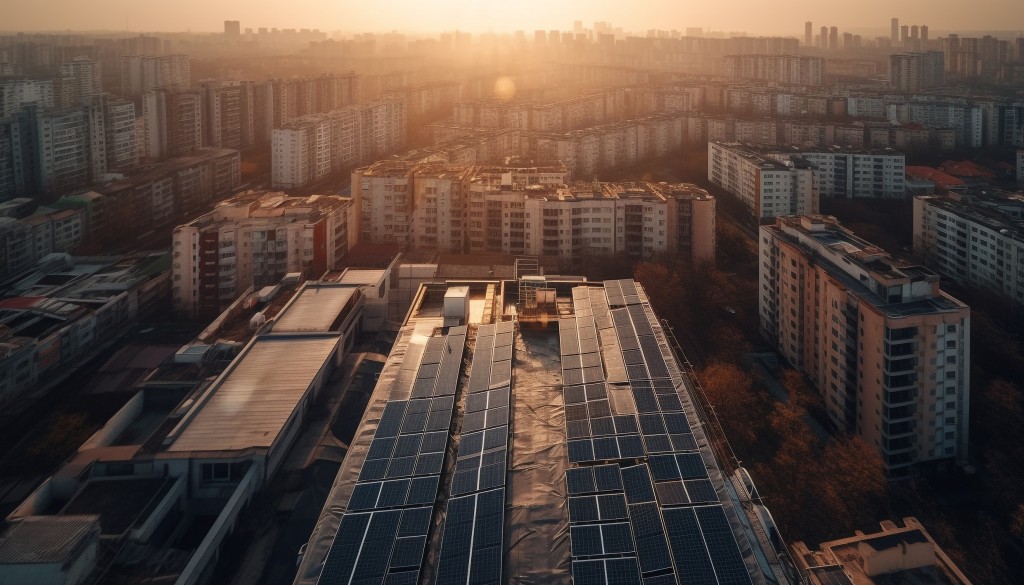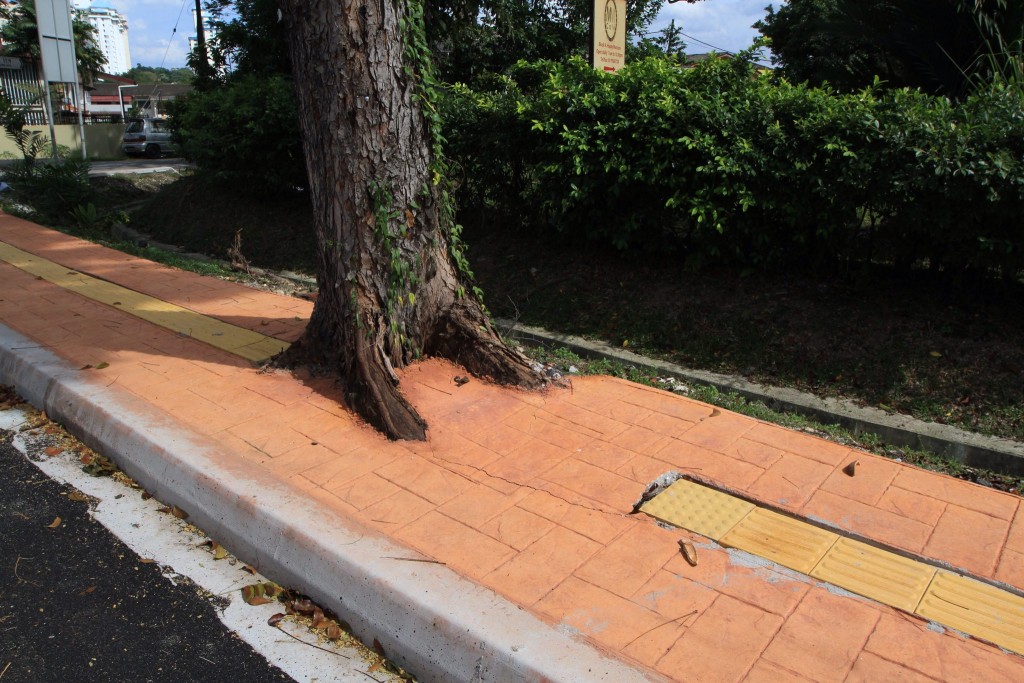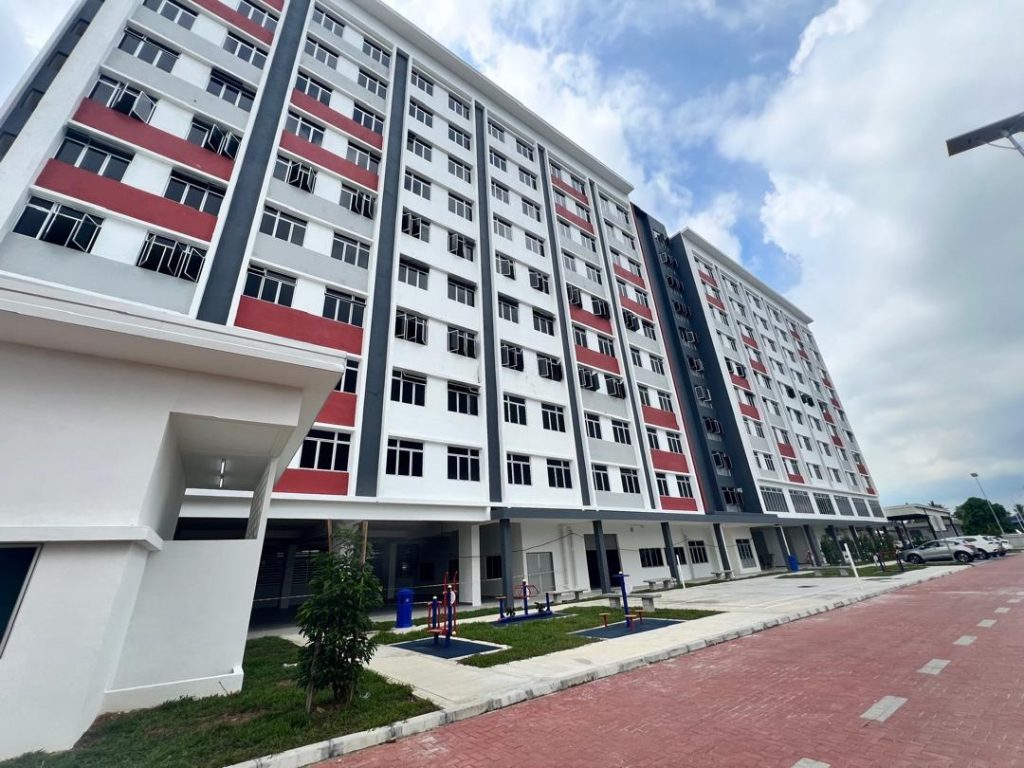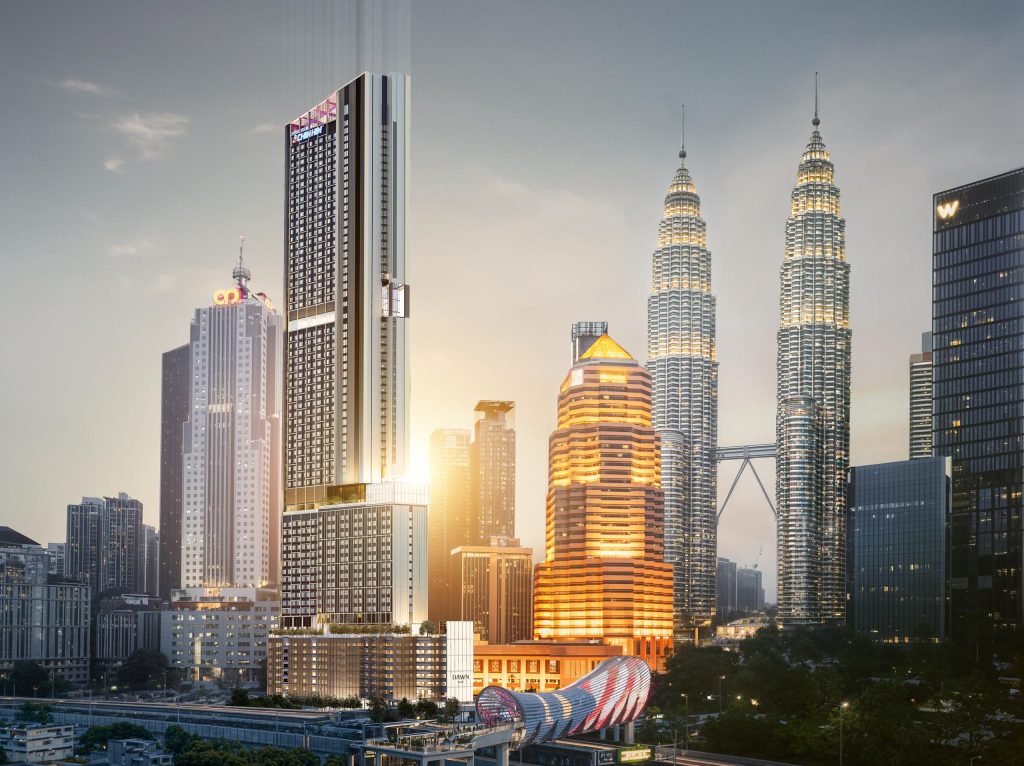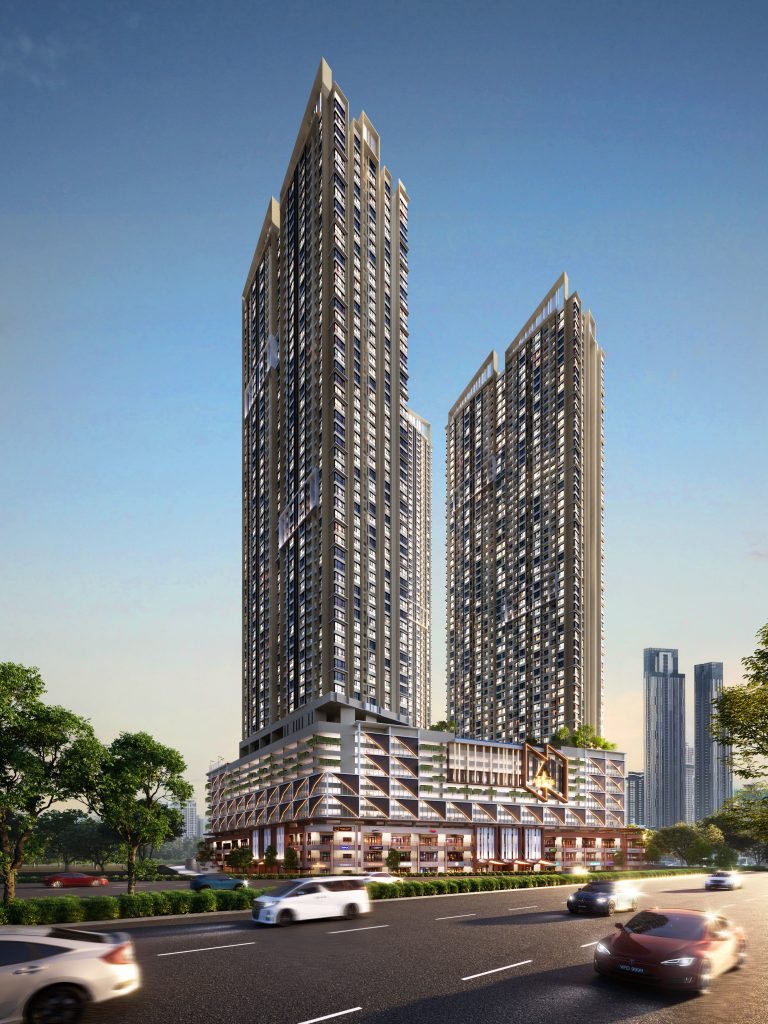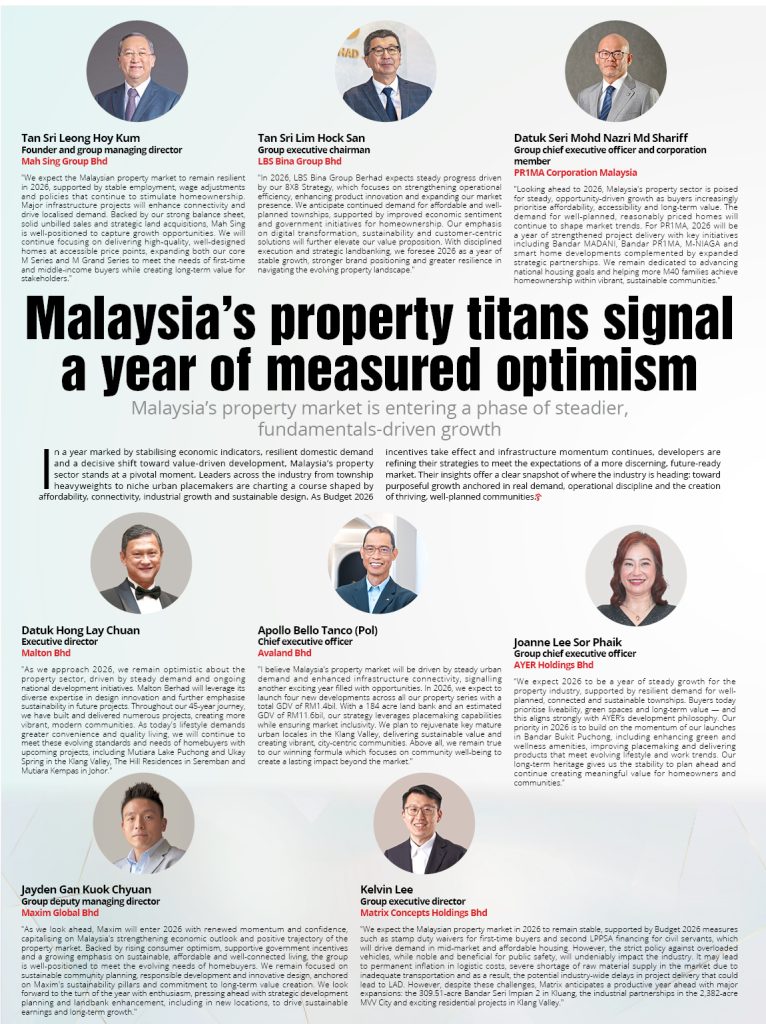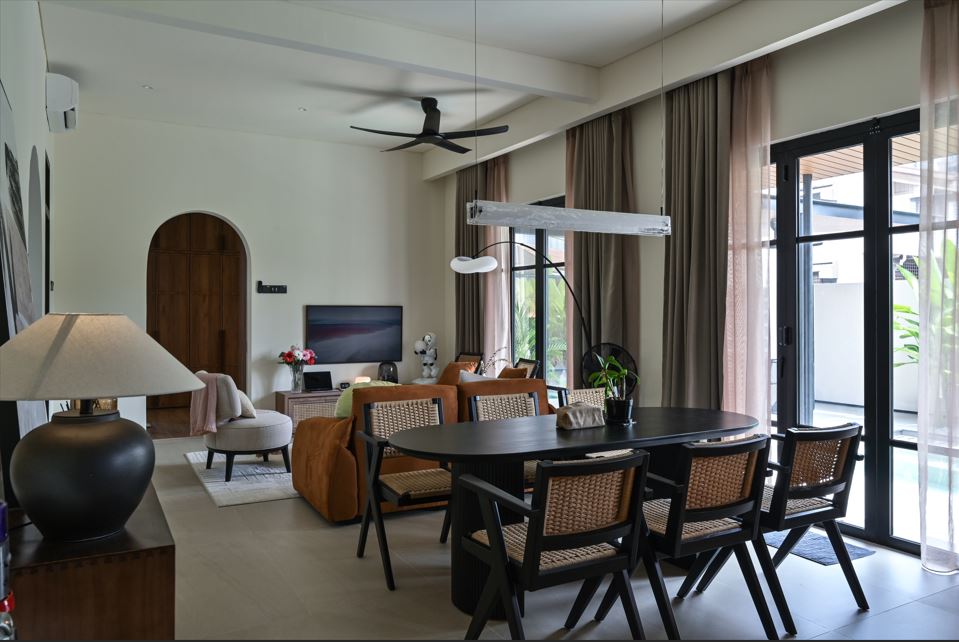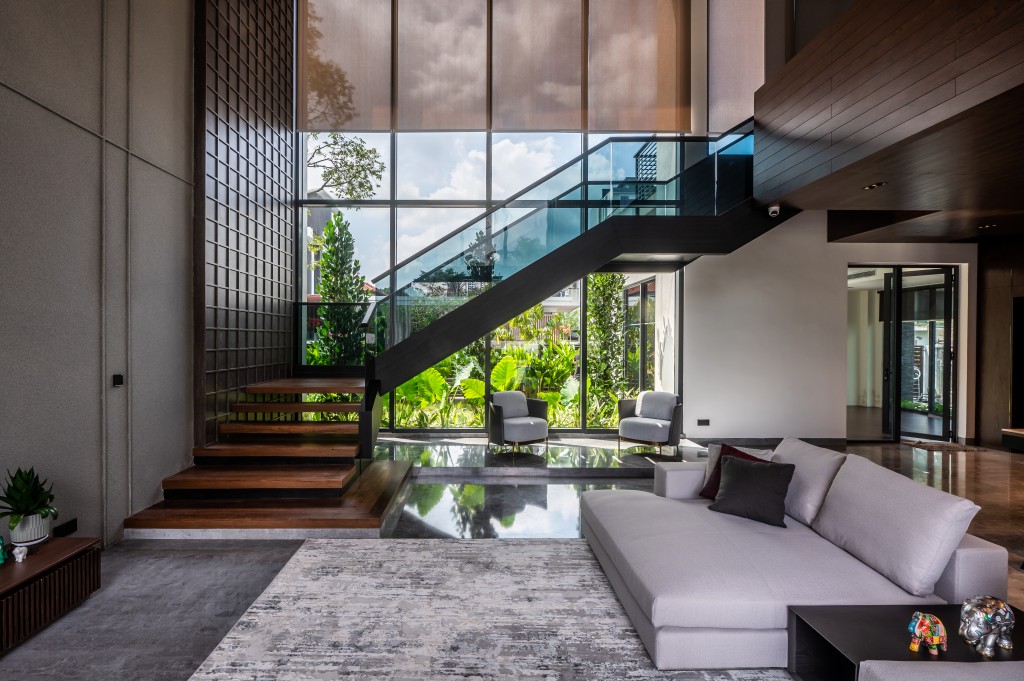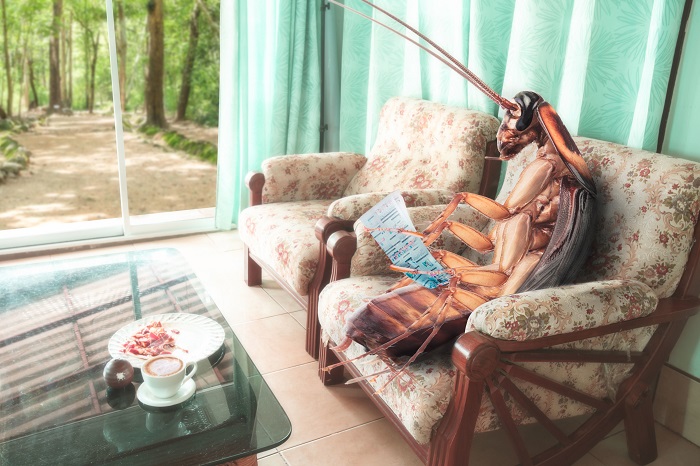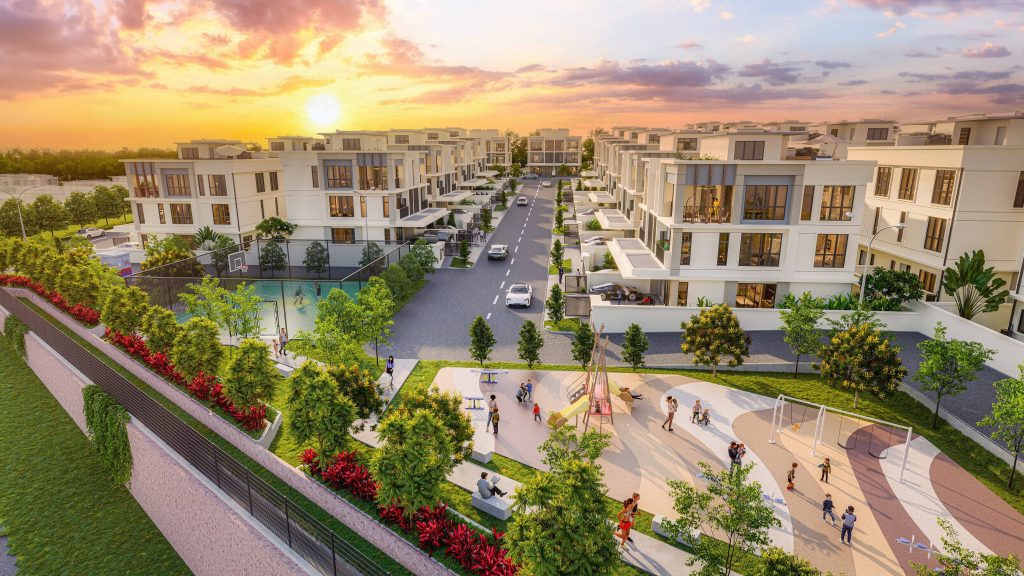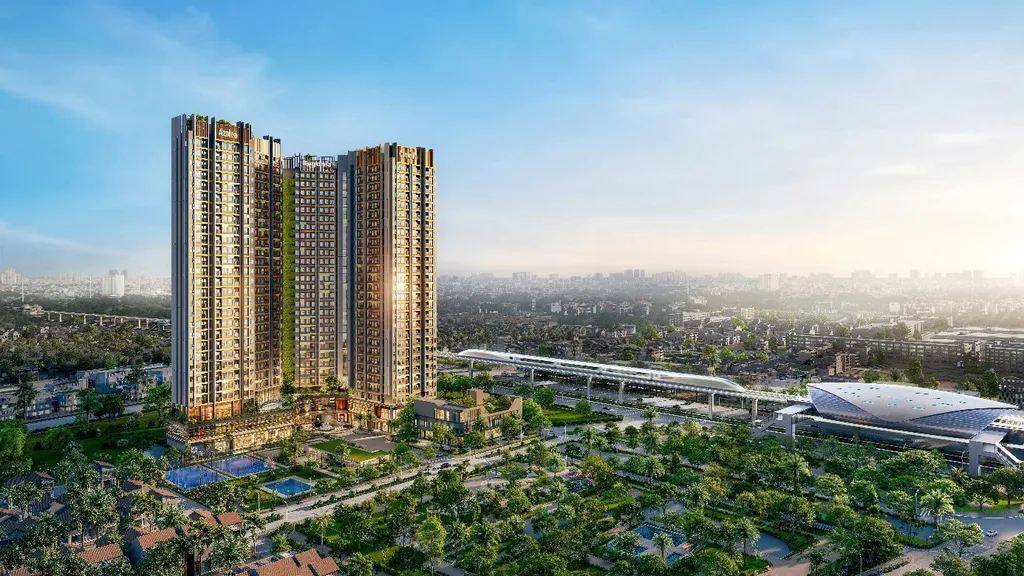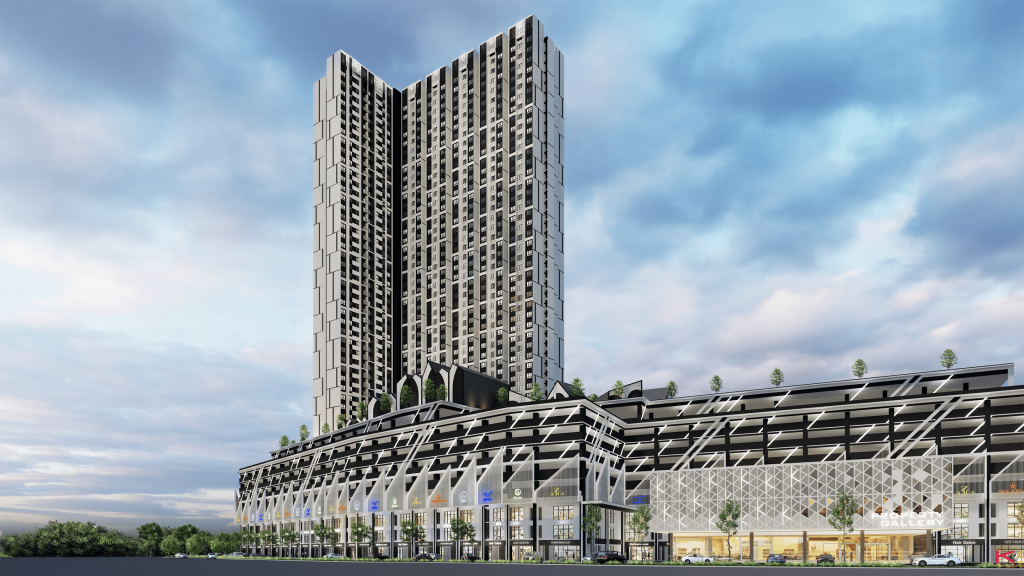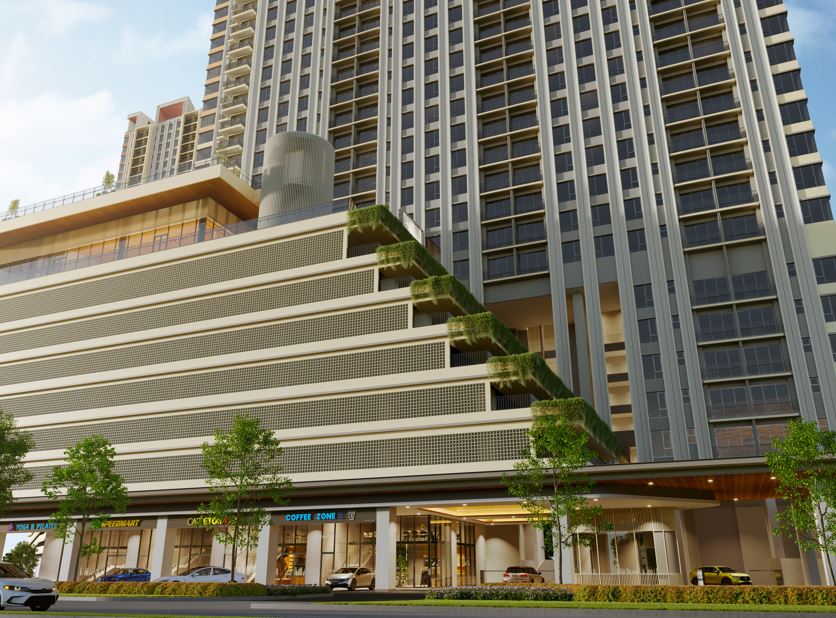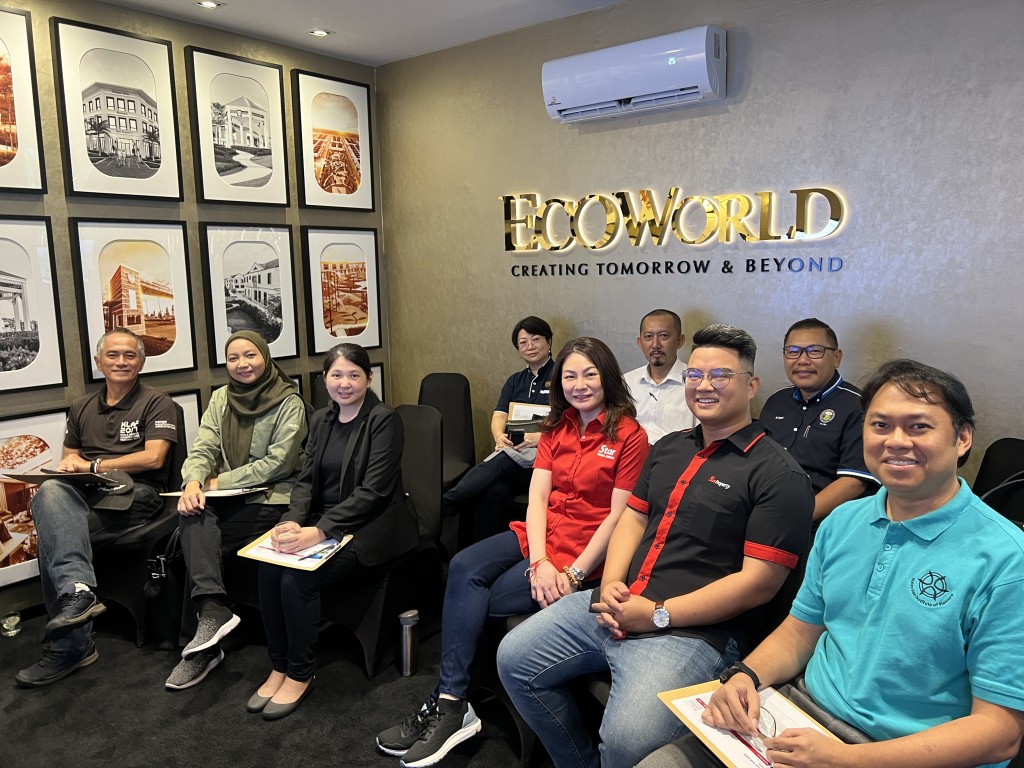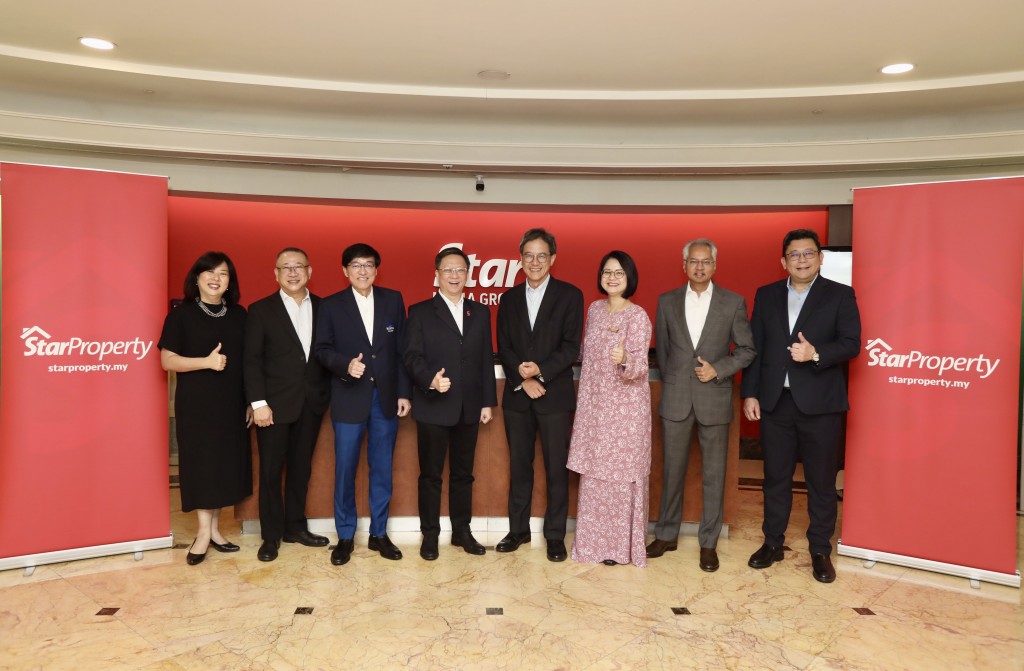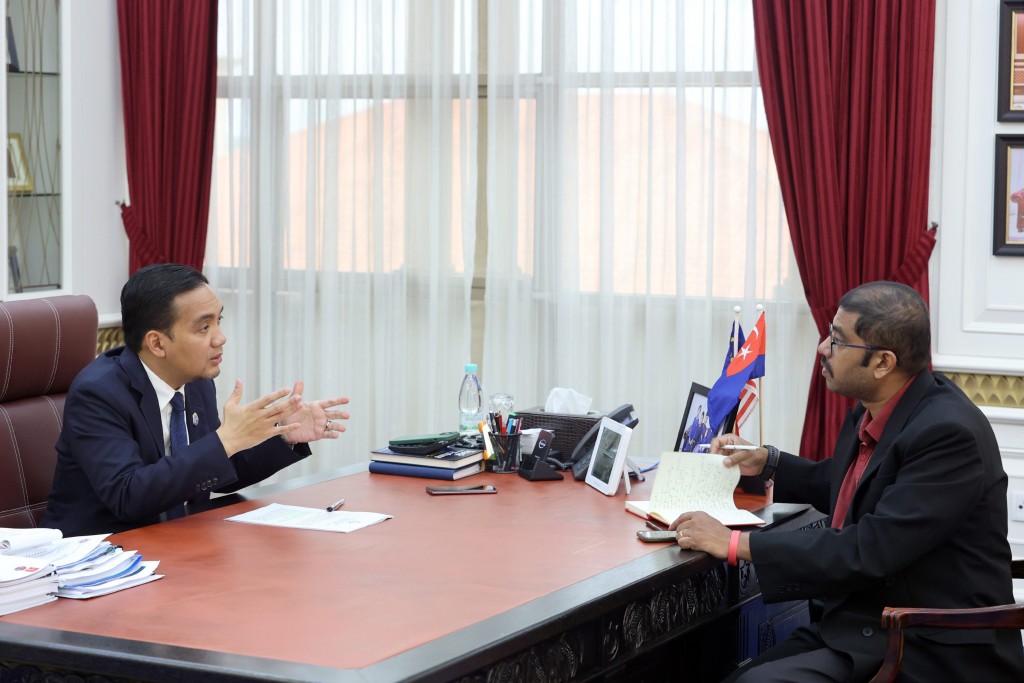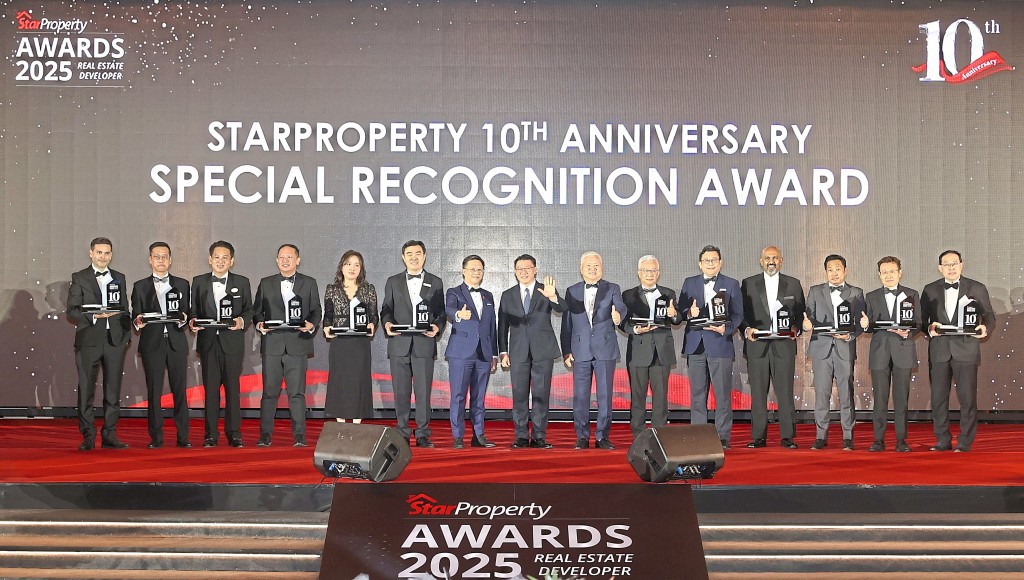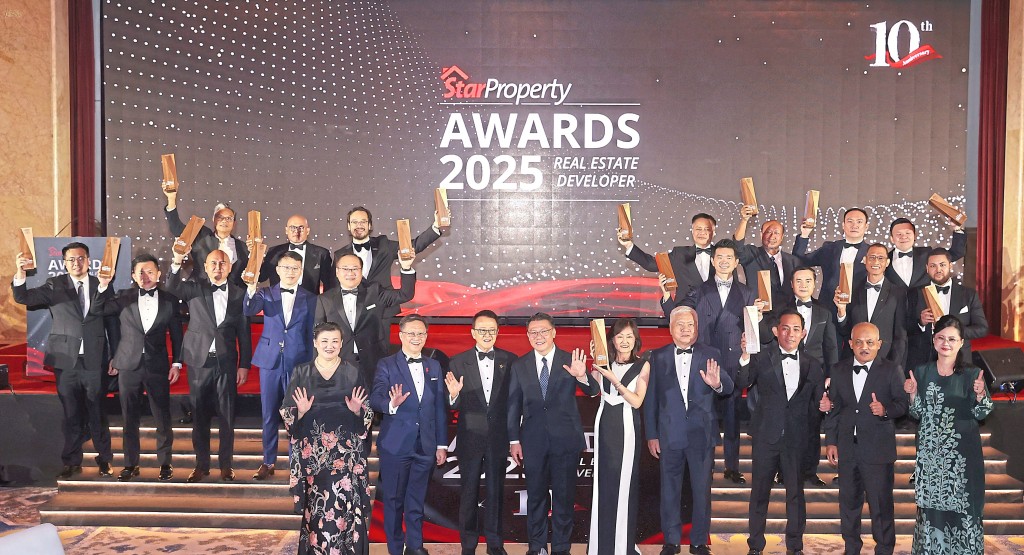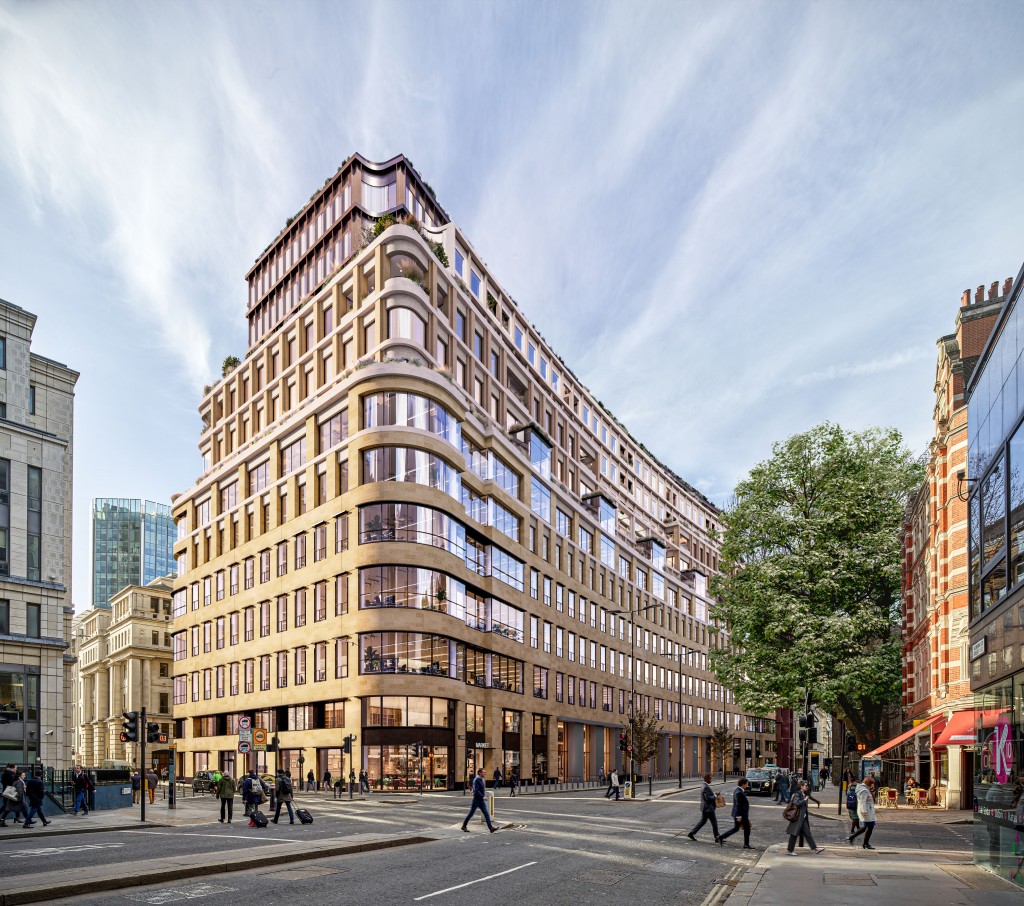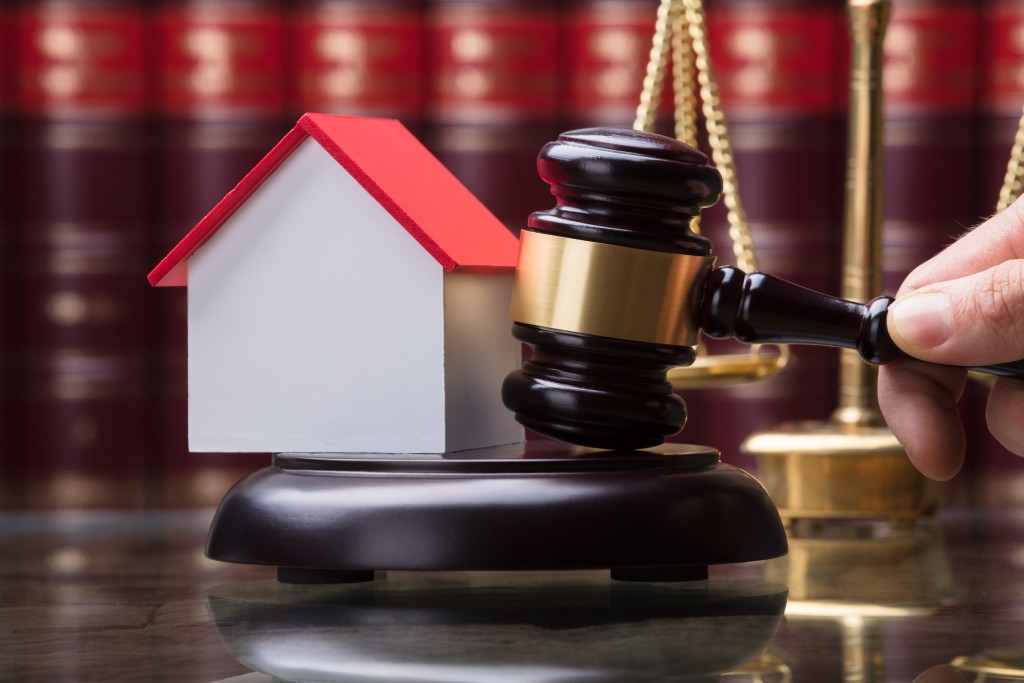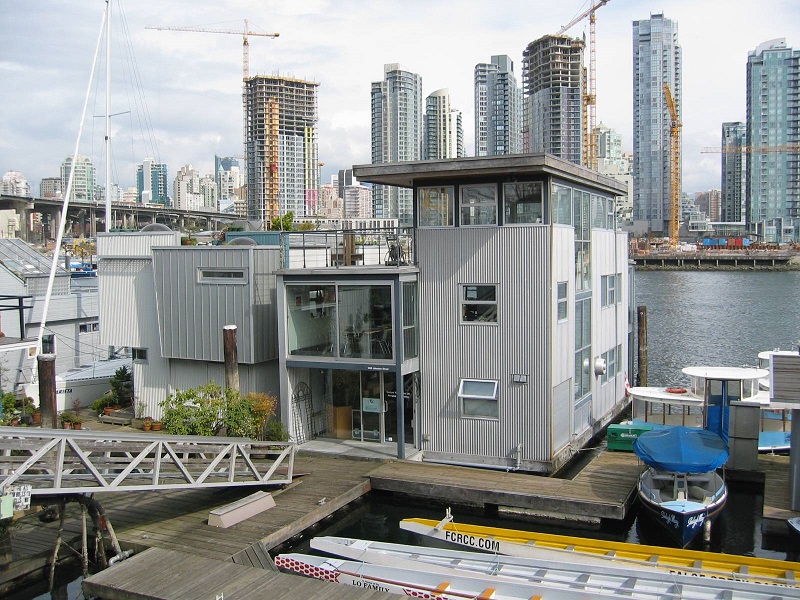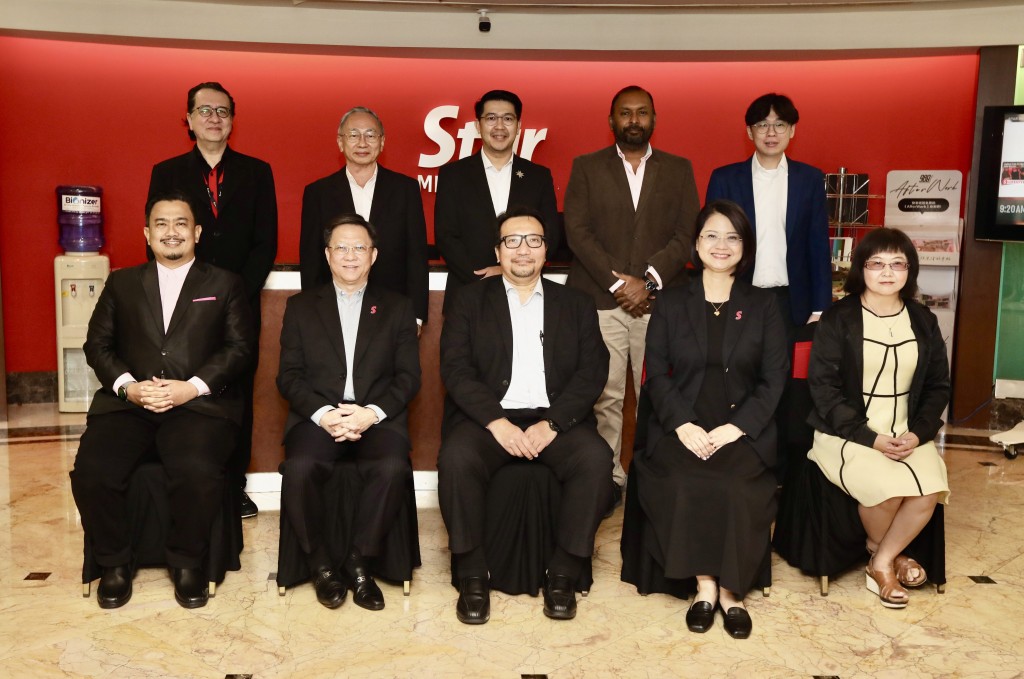
Star Media Group (SMG) chief executive officer Chan Seng Fatt (seated, second from left) and chief operating officer Lydia Wang (seated, second from right) in a group photo with the roundtable’s panel. Standing from left are moderator StarProperty senior content manager Joseph Wong with Wong, Hoi, Nageswaran and Ang while (from left) Sarly, Nahar and Goh are seated. — Low Lay Phon/TheStar
StarProperty roundtable highlights the need to strengthen buildings’ waterproofing
By: Yip Wai Fong
Cities are sometimes called the concrete jungle, populated by tall buildings that house thousands of people. These concrete structures may look imposing and indomitable but behind the hard facade, unseen decay might have started, caused by water that has seeped through failed waterproofing material. When the tell-tale signs—mouldiness, dampness and peeling paint on the wall—are ignored, leakages follow, with water dripping from unidentified sources. If left unattended, the water might run its course over the building’s steel structures, corroding them over time. At this stage, the building is facing the risk of failure, posing a danger to its occupants.
The importance of waterproofing in preserving buildings’ structural integrity and lifespan cannot be overstated in Malaysia, a country with copious rainfall and monsoon seasons. Yet, according to a survey conducted by StarProperty, 87% of 550 respondents have encountered waterproofing issues at their places of residence, from dampness or wet spots on walls or ceilings, water leaks, cracks in walls, mould growth and a musty smell to sagging ceilings. A majority of the respondents also pointed out that roofs and bathrooms are usually where the issues are spotted.
The concerning questions are: How can we better protect buildings as climate change brings even more rain? What are the challenges for owners of ageing buildings? At the Sustainable Refurbishment for Existing Buildings roundtable, a panel of professionals including architects, property managers, surveyors as well as representatives from the National Housing Department and building material supplier Nippon Paint, recognised the need to raise more awareness for building and homeowners and decision-makers on waterproofing, including its maintenance.
Strengthening waterproofing in the laws
While it is common for older buildings to undertake repainting work, the prior rectification work that is necessary before the repainting work commences is less visible to many. This often involves replacing or repairing the waterproofing, which is the root cause of mould, cracks and damp spots on walls that would defy any cosmetic painting jobs. In other words, waterproofing rectification is inevitable in aged buildings but it is hardly budgeted for by most Joint Management Bodies (JMBs) and Management Committees (MCs). In most instances, the panel said sinking funds are insufficient to undertake both the repainting and the ensuing waterproofing rectification works.
“Buildings that are more than 10 years old face structural movement; there would be cracks and waterproofing challenges. Waterproofing is an invisible cost that doesn't get factored in. This is capex or cost-intensive and some may not have the funds because for strata buildings, under the Strata Management Act, sinking fund contribution is at its minimum, (just) 10% of the equivalent of charges or service tax,” said Association of Valuers, Property Managers, Estate Agents and Property Consultants in the Private Sector, Malaysia (PEPS) advisor Wong Kok Soo.
Pointing to the tendency for most owners to keep sinking fund contributions at the bare minimum, Wong proposed legally mandating the amortisation of all capex-intensive maintenance to ensure adequate funds.
“The authority needs a paradigm shift; we have to amortise all the capital expenses for repainting, waterproofing and replacement of lifts—all these need to be amortised and captured in the sinking fund. This will lead to sufficient funds when the time comes for repainting or waterproofing,” Wong said.
Concerns were also raised over the need to standardise waterproofing specifications for buildings, creating legally binding minimum requirements for developers as well as future building caretakers to adhere to. Currently, developers’ and building owners’ overarching consideration when it comes to waterproofing seems to be the cost and their budget, at the expense of long-term durability and safety. Malaysian Institute of Architects (PAM) environmental, social and governance (ESG) committee chairman Axxu Hoi Jung Wai said this might lead to buildings with leakages earlier than expected, a worrying observation.
“Developers with a short vision just maintain the buildings for two years after sales. After they leave, any problems are left to the management and residents. Why would they want to apply premium waterproofing? Nowadays, cheaper waterproofing products are being applied to new buildings. If we don’t put in controls and standards, more new buildings will be facing waterproofing issues,” he warned.
Sharing Hoi’s observation that buildings have started leaking earlier than before, Nippon Paint senior manager Ester Goh attributed it to harsher weather conditions, which underscores the need for stronger waterproofing materials.
“Why do newer buildings have leaking issues? We also notice this tendency that buildings have started to leak earlier. As you can see, our weather conditions are getting harsher and harsher. We need to find a more sustainable solution, but in the initial stage, although the specifications proposed are very good, clients’ budgets do not allow it, so sacrifices were made in the initial stage. It is not good,” she commented.
Green Building Index (GBI) chief executive officer Sarly Adre Sarkum, also an architect, pointed out that standards are in place for waterproofing under Malaysia’s Standards Department. However, these standards were not codified as part of the Uniform Building By-Laws 1984 (UBBL), making compliance not mandatory.
“To be fair, we actually have many good standards. For waterproofing, we have the MS1294, parts 1, 2 and 3, the Code of Waterproofing for buildings, covering basements, roofs and wet areas. We have MS1063 for bitumen waterproofing, MS1542 for waterproofing admixture for concrete, MS1583 for external waterproofing coating. But the problem is, we should incorporate it into the UBBL. We have By-Law 32A for buildings to be energy efficient. But the MS1294, MS1063, MS1542 and MS1583 are not in the UBBL yet. We need to put these in and draft them properly so that there are minimum standards. Perhaps for housing, they should be higher,” Sarly said.
He also added that having higher standards is not to put an additional cost burden on end users but to address a systemic issue.
“People usually think of waterproofing as just limited to a specific site of the building but actually waterproofing is ubiquitous in the building. It is in roof leaks, bathrooms and basement seepage. There have been cases where swimming pools were badly waterproofed and they leaked. I would like to highlight that this is a systemic issue,” he said.
Wong suggested making it mandatory for developers to disclose waterproofing specifications used when handing over buildings to JMBs and MCs, as well as assigning over the product warranty.
“It is important in the Strata Management Act 2013 to stipulate that when the developer hands over to the JMB, there is a checklist that discloses the waterproofing specification used in each waterproofed area. When we know the specification, we also know approximately the lifespan and the JMB can allocate provisions. It is also time for the Act to ensure developers assign the warranty to the JMBs,” Wong proposed.

Pang said professionals are much more aware of the comprehensive measures needed to fully understand an issue that arises in buildings. —Low Lay Phon/The Star
Developing a maintenance culture
Sarly said that for buildings to function optimally, maintenance is needed. To inculcate a culture for building maintenance, Sarly suggests taking a leaf from the practices of green buildings, where upon obtaining a GBI certification, building owners will be issued a “user manual” on how to maintain the green performance. Similarly, building managers and owners of typical buildings should also be provided with a manual for maintenance guidance.
“Something that can be learned from GBI is, for every green project, you have to give us a user manual. But when you purchase a property for RM500,000 or RM1 million, they don’t give you a user manual. If something goes wrong with the lift or door handle or waterproofing, how are you going to maintain it and who are the suppliers to contact?” he asked.
Malaysian Institute of Property and Facility Managers (MIPFM) secretary-general Nageswaran Muniandy agreed that having a manual will spark the start of awareness.

No matter how good the waterproofing is, routine maintenance is also important for its lifespan, Ang stressed.—Low Lay Phon/The Star
“I feel that having a manual in place is a start to awareness. When you read, you’ll be aware that your property is not just about corrective maintenance but also requires preventive maintenance at specific intervals, which would reduce corrective maintenance that costs a bomb. The manual would be a good start. Your property ought to last 50 years, so you need to make sure it ages gracefully,” Nageswaran said.
National Housing Department’s Housing Management’s housing management deputy director general Datuk Muhamad Nahar said having a manual supports the effort for preventive maintenance.
“With a manual, that’s where preventive maintenance comes in. For cars, we do servicing after a certain mileage for preventive maintenance. There is no such thing for buildings. What we do currently are all curative measures,” he said.
Nippon Paint senior manager Aaron Ang also stressed that regular checks are important.
“I was on an inspection tour at a townhouse project and I found that the waterproofing was still in good condition but there were leakages in several areas. It boiled down to simple things like clearing the rainwater pipe because it was clogged, causing ponding. The maintenance team did not go up to the roof and see that it was clogged. So we cleared it and the leaking was solved. My comment is, no matter how good the waterproofing, it is important to have routine checks. Every three to six months, the maintenance team should go up to the roof and check. Sometimes the waterproofing is slightly peeling or de-bonded from the membrane, you can still do a localised repair, no need to repair the whole thing. But if you leave it, the water will seep through and damage the whole roof and you need to repair the whole thing,” Ang shared.
Roping in the professionals
Hoi, who had experience chairing an MC, said that most are run by laymen who lack technical knowledge when it comes to evaluating the solutions needed for waterproofing or refurbishment projects. This has led to funds being spent on misguided solutions that didn’t solve the problem. He said it is time for JMBs and MCs to shift their mindset to engage professionals.
“Let the technicians and professionals run the projects and the repair works. I think this awareness needs to be promoted among the residents. I have seen management bodies engage architects and engineers to propose solutions and handle the contracts and supervision of the refurbishment work. I think that’s a good practice because the use of funds needs to be transparent and answerable to the residents,” Hoi said.
“We’ve heard about MCs using their own people to do the work and the problems didn’t get solved and fights happen. Those incidents might be from the cowboy era but as 70% of the city population lives in strata buildings, we should be quite mature,” he added.
Sarly also related incidents where PAM’s Architect Centre received complaints purportedly on poor jobs done on building rectification works, when in fact the building owners or MCs had appointed non-professionals.
“Many have called up building inspectors who are not real inspectors; they are not trained because there isn’t a regulation to regulate building inspectors. This adds fuel to the fire. Homeowners are given wrong advice which makes the problem worse. They should go to a certified agency, like PAM’s Architect Centre, which produces reports for legal cases,” he said. “This is important to highlight because the PAM gets complaints from homeowners who were given reports by these untrained people. The complaints were thrown out because our members were not involved.”

Professionals always seek and recommend a wider range of advice and expertise to address a building’s issue holistically, said Nageswaran. —Low Lay Phon/The Star
Royal Institution of Surveyors Malaysia (RISM)’s Board Building Management chair Steven Pang said professionals recognise the comprehensive measures needed to identify the root cause of a building’s issue.
“RISM also provides building inspection and our reports can be tendered in court as expert reports. We found sometimes that the problem is not the waterproofing material but the construction, either a structural failure or uneven protective screeding that causes ponding to happen. The stagnant water then seeps through the cement screed because it is porous. We need to find out the root cause before applying a new waterproofing. It is not easy; we have to go through detailed forensic work before we can provide a long-term solution. We also need to work with structural engineers and suppliers and conduct localised tests,” said Pang.
Nageswaran added that professionals are bound by the fact that they can be held liable for their conduct.
“Liability is always on our mind. Liability keeps us intact in ensuring our recommendations are not based on our experience per se but also include other competent sources. For example, we recommend our clients to appoint professionals for waterproofing work, as waterproofing can range from RM1,000 to RM1 million. When it requires a capex and a holistic solution, we always recommend appointing professionals to find out the root of the problem. If we start correctly, it will definitely end correctly. If there is an issue arising afterwards, you are protected by warranty coverage or insurance. So there is a sense of security after the payment is paid off,” he said.
“A building professional is cognisant of this but how do we define a professional? This is where the legislation would define who should be practicing what,” he added.
Knowing the material
Goh said the lack of mandatory standards allows for various waterproofing specifications being proposed for a particular issue, which instead of helping, lead to confusion.
“At the moment, solutions from every service provider are very different in standards and work scope. This can confuse the MC because they don’t have a technical team to make an evaluation,” she said.
Using the case of leakages on reinforced concrete (RC) flat roofs, a common roof type for modern buildings in Malaysia, Ang said building owners need to be aware of the common solutions being peddled in the market.
“A lot of the time, the proposed solution for RC roof leakage is a torch-on sheet membrane; they come in rolls. But you need to know the origin of these membranes. The qualities vary and so does the reinforcement of these membranes. The granules on the membranes act as UV protection. However, in one or two months, they might get washed off to the drain and the membrane is now bare and starts to degrade due to UV. So if a torch membrane is used, it gets washed off easily. Sometimes the liquid type is used and the user might do it themselves and apply it without knowing the thickness required or not do proper surface preparation. That’s why the failure occurs,” Ang elaborated.
Goh said waterproofing warranties hinge on the type of polymers in the material.
“When you ask the question about how long the warranty, for waterproofing, certain polymers like thermal plastic polyolefins, very good polyurea systems, and polyaspartic can last 25 years in the building. But certain polymers are not designed to last more than 10 years. Especially the bitumen-based systems, they tend to age in tropical countries,” she explained, adding that users should evaluate a waterproofing based on the long-term value it offers, as waterproofing quality is something that is drawn out over the years.
“When you choose a short-term solution, you spend less but if you draw out the timeline, you would actually save more if you choose to spend more for a long-term solution. So in choosing a solution, you must have an analysis of its value over the long term. The users must understand a solution for its value and not the cost,” she said.
Goh also stressed the importance of maintenance to prolong the lifespan of waterproofing.
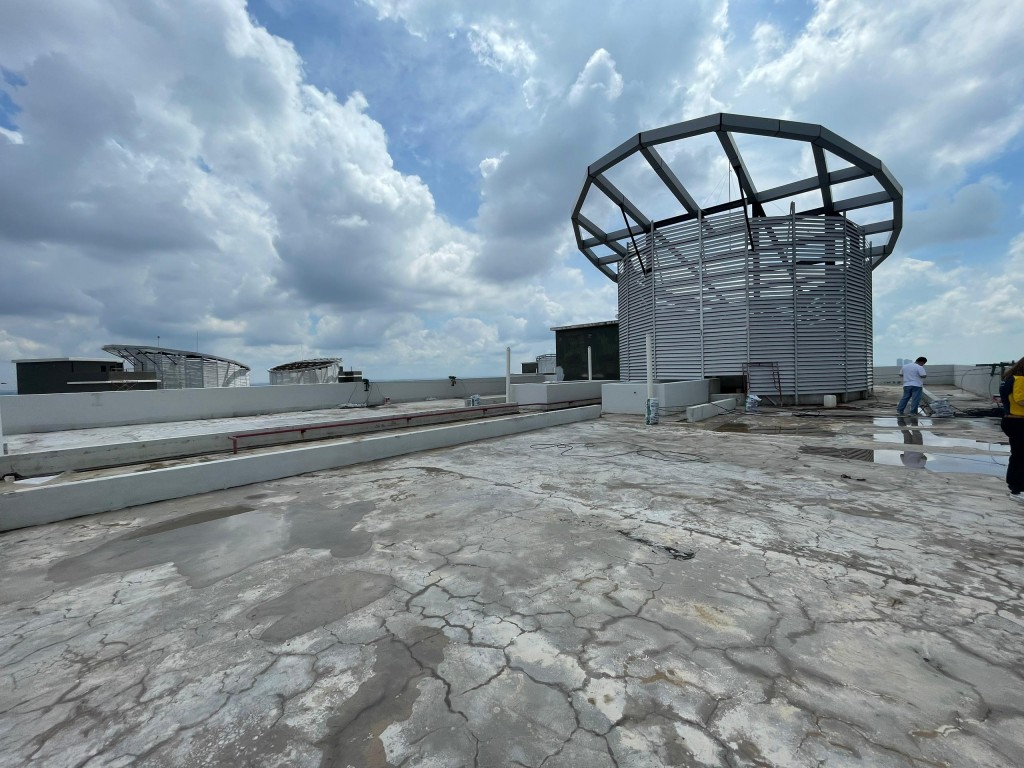
RC flat roof is common in Malaysia and prone to water ponding, underscoring the need for a robust waterproofing system.
“You must have routine checks; you must set up the checks in a manual for every two or five years. By the 10th year, you should have a budget to replace this material. So knowing the polymers in your waterproofing solution is critical to help you schedule periodic maintenance. It’s similar to the protective coating for steel structures.
In ISO12944, we have a five-year major maintenance or 15-year major maintenance. This allows us to go back to conduct thorough checks and determine whether a capital budget for refurbishing it is necessary. It doesn’t mean a failure has happened but it’s the time to do critical maintenance. So routine checks like clearing drain blockage should be done every two or three months but you must have major maintenance set up in the fifth year or 10th year.
You will be able to minimise the risk of damage due to leakages, especially the structural integrity at the podium where the swimming pool is, because corrosion by chlorine can be quite disastrous. It could eat away at the steel structures and pose dangers. We don’t want this to happen, so we must have a timeline for major maintenance for buildings,” she explained.
Concrete care
As humans spend most of their time inside buildings, maintenance can no longer be taken for granted. Approached systematically, with the right know-how and supportive regulations, building maintenance shifts from repairing failures to holistic care that provides the occupants with peace of mind.
“There should be a cultural shift in thinking that a building will last forever. Big players have shown us that buildings can be maintained. For example, how long has KLCC been there? It still looks like it’s just been constructed because the owners maintained it immaculately. I think that culture must be embedded in our industry and education—that buildings need care so that they function properly,” Sarly concluded.
Sidebar: A holistic building solution provider
With a history of over 50 years, Nippon Paint Malaysia has garnered extensive and deep knowledge of the local building industry’s needs, positioning the company as the foremost building material supplier that provides effective and comprehensive solutions.
Nippon Paint’s innovation has produced a wider range of waterproofing solutions, serving both new projects and refurbishment works. Its systems cover roofs, wet areas, basements, water-retaining structures and walls, with solutions ranging from liquid membranes (NippoSEAL) to sheet membranes (NippoGARD) and cementitious membranes (NippoCEM). These integrated options provide long-term protection against leaks and deterioration, safeguarding a building's value while reducing financial strain on owners.
Central to this is the company’s Total Coating and Construction Solutions (TCCS), a holistic system that ensures every stage of refurbishment—from drymix and waterproofing to repainting—is carried out with compatible systems, certified applicators and long-term warranties. These solutions address immediate issues like leaks and surface deterioration, extend building lifespans, safeguard property values and reduce financial strain on owners. In short, TCCS delivers the durability and assurance that Malaysia’s ageing property stock urgently needs.
“That’s why at Nippon Paint, we have established a strict waterproofing procedure that includes periodic site inspections and close supervision to ensure proper application,” said Goh. “This process safeguards against workmanship errors by enforcing best practices at every stage: pre-maintenance, during maintenance and post-maintenance, delivering long-term durability and performance.”
Goh also emphasised, “To address this, Nippon Paint provides a dedicated re-waterproofing service, carried out by certified applicators and backed by multiple safeguards, including product warranties, workmanship warranties and independent verifications such as SIRIM certification, Green Label certification and lab test reports. These measures ensure that waterproofing solutions are not just applied but applied correctly, delivering long-term durability and confidence for property owners.”
Stay ahead of the crowd and enjoy fresh insights on real estate, property development and lifestyle trends when you subscribe to our newsletter and follow us on social media.




